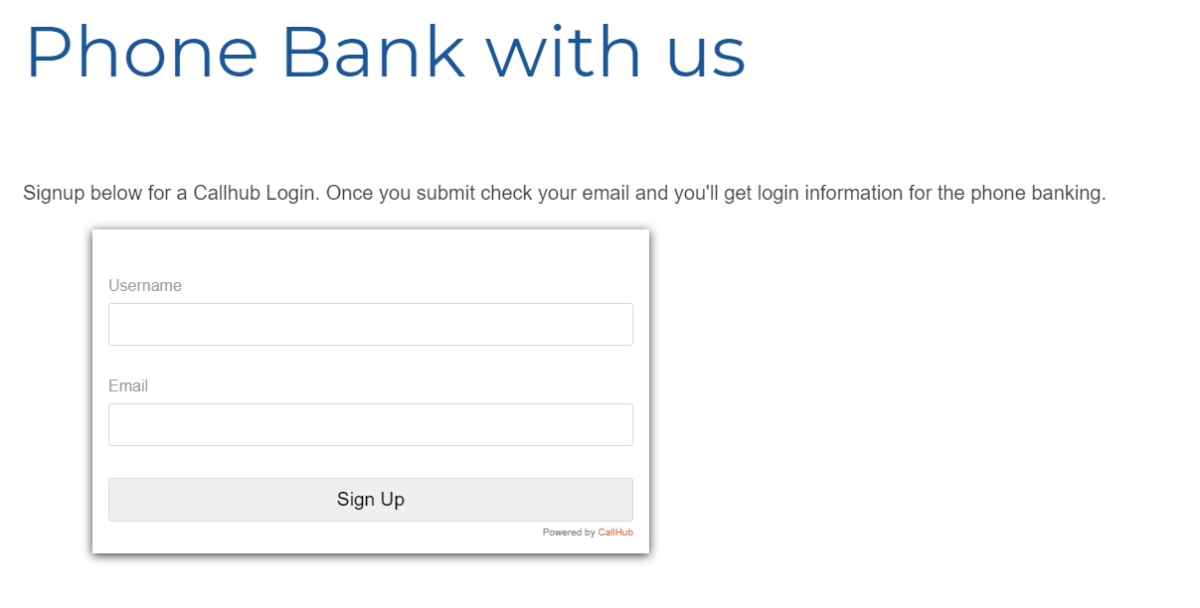Table of Contents
CallHub has been a staple of my political campaign communication plans for years now. When my team and I are hired by a candidate they put a lot of trust in us, I need to be sure we’re giving them the best without breaking the bank. Every year that ends up being CallHub’s suite of features, which gives our candidates all the communications tools they need but for a fraction of the cost of other software.
This year we needed these features more than ever. As COVID-19 took away the in person campaigning that is the backbone of most elections, we had to find new ways to connect with voters. Thankfully our years of working with and getting to know CallHub came in handy, and we were able to win a ton of elections using the software. Here are 7 ways my team and I used CallHub to help our candidates win in 2020.
1) Texting voters personalized voting information
One of my favorite ways to use text messaging is to give voters information they can use to get out and vote. Texting voters with a boilerplate voting reminder is great, but CallHub has a simple way to take that one step further and really push get out the vote efforts to the next level: Custom Contact Fields.
What we did in 2020 was send our voters a text reminding them about election day and asking them if they need any help finding their polling location. If they responded that they did, we were ready with a prewritten message that automatically merged in their voting precinct and closest early voting location. Using the “Custom Contact Fields” we merged in their polling location from our voter file, letting our texters just click a button to show voters exactly when and where they can vote. It helped us move beyond one-way communication and start a dialogue with our voters, while helping get more of our supporters to the polls.

2) Setting up call center for volunteers to call remotely
After COVID-19 started to become a national crisis in March, campaigns across the country were thrown into disarray figuring out what to do next. All of my candidates were on the phone with anxious supporters wondering how they could help now that knocking on doors, tabling, and house parties were no longer safe.
We looked at a number of options for remote volunteer phone banks before deciding on CallHub, whose “Call Center” feature was perfect for these Volunteer calls. With minimal training our volunteers were able to jump onto the software and make calls to the exact voters we wanted to talk to, complete with a campaign script and the ability to record the responses they got back.
3) Volunteer signups using “Embeddable Forms” on a campaign website
We needed a way for our Volunteers to sign up to our Virtual Phone Banks without a lot of time on our end. Working with volunteers can be very time consuming, so the simpler and more automated the process the more my team could focus on other campaign priorities.
CallHub’s “Embeddable Forms” made this process automatic and simple, creating a simple landing page on our website we could send supporters to sign up and then automatically be placed into a pre-created “Call Center” on the website. Once they signed up they got an email prompting them to create a password, and once they did they were in the Call Center. It made the signup process simple for our volunteers and worked without any input from us, which allowed my team to focus on other parts of the campaign.

4) Sending out voice broadcast to highlight a big, late breaking endorsement
For a local Sheriff’s race we got a big, late-breaking endorsement from a former United States Senator. It’s always a jolt to the election to get big news late in the campaign, but it can be a real headache to try to get the word out to voters fast enough to make a difference. What we did, on top of running the Facebook ads and sending an email to our list, was to record a Voice Broadcast and send it to voters through CallHub. The Senator just recorded the message on his phone, texted it to us, and I was able to upload it directly into CallHub and quickly send it to our list of voters. Since CallHub only charged us for calls that answered, we were able to reach thousands of voters for a couple hundred bucks.
5) Keeping us Compliant by using the “Analyze contact list”
The Telephone Consumer Protection Act (TCPA) is straight-forward and strict: you cannot send automated phone calls to cell phones. Anyone knowingly violating this rule can be charged up to $1,500 per call. When you’re sending thousands of calls like we were, those fines add up quickly, and the results can be devastating.
We were able to stay compliant with outbound call regulations using CallHub’s “Analyze contact list” feature. It was a cheap and accurate way to review the numbers on your list for cell phones and then automatically remove them from your calling list. We never missed the chance to do that before every phone call to protect ourselves and our candidates.
6) Using MMS to send a campaign message to our list
MMS, or multimedia messaging service, is a texting system that allowed us to send images to voters. It costs a slight premium to send MMS texts, but in the right situation it’s the perfect choice. It’s a great option for any text you’re sending voters that you want to highlight or make more emotional. We used it for both a contrast text message we sent out as well as a biographical story about our candidate. Even with the premium cost for MMS it still came out to be a fraction of the price to send a piece of mail to that same person, and with a 99% open rate on text messages it was a no brainer that certainly helped us win a lot of votes.

7) Texting slate cards to voters via peer 2 peer texting for a political party
One of the most powerful tools at a political party’s disposal is their endorsements and slates. It lets people know where their party stands on issues on the ballot they might not have thought about. CallHub’s Peer 2 Peer texting feature let us send a typed out slate card to voters on behalf of a political party in Florida right before early voting started in the state. This let voters know the issues and candidates their party supported as they walked into voting booths, letting them have a quick reference sheet as they voted.
CallHub Came Through In the Clutch
As campaigners there are two resources we never have enough of: time and money. CallHub’s reasonably priced voice, text, and analysis features helped us save our candidates money so they could invest it in other areas. The simplicity of the features saved us time as well, letting us focus on other areas of the campaign that needed support instead of fussing around with technology.
None of these tactics are going to win you your election on their own. You still need a good message, a good campaign website, and a good outreach strategy. But used the right way, CallHub’s features can help candidates on any budget communicate with their voters and get the word out on their message. What we found is that all the tools you need are there, now it’s up to you to figure out what works for you and make it happen.
About:

Bryan Eastman is a political consultant and founder of PoliEngine, a political website builder that makes building beautiful websites easy and affordable for all candidates.

